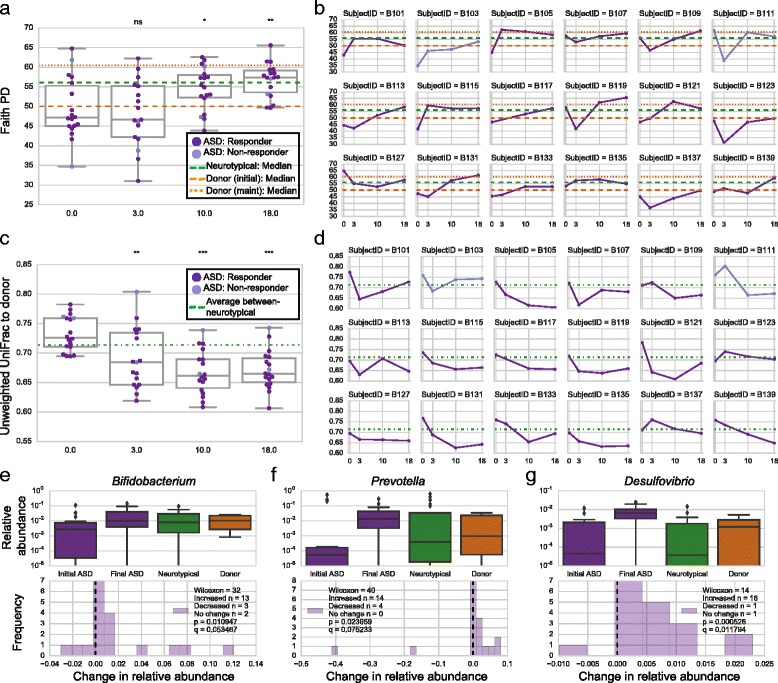Fig. 3.

Stool microbiota changes with fecal microbiota transplant. a Changes in Faith’s phylogenetic diversity (PD) in the microbiota of 18 children with ASD as measured from stool samples. Orange lines indicate median PD of the donor samples (dashed line represents initial donor samples (n = 5), and dotted line represents maintenance dose samples (n = 2)), and green line indicates median PD of 20 neurotypical controls at week 0. ns indicates not significant, single asterisk indicates q < 0.05, double asterisks indicate q < 0.01, triple asterisks indicate q < 0.001 (two-tailed Wilcoxon signed-rank test comparing weeks 3, 10, and 18 to week 0 values). b Change in Faith’s PD tracked on a per individual basis for all MTT recipients. Most individuals experienced an increase in gut microbiota PD. c Unweighted UniFrac distances between ASD gut microbiota and most relevant donor sample (initial donor sample at weeks 0 and 3, most recent maintenance dose sample at weeks 10 and 18). Green line indicates the median interpersonal variation between neurotypical controls and illustrates that prior to treatment the difference in gut microbiota composition between MTT recipients and donors was on the order of normal interpersonal variation. Following treatment, the MTT recipients were more similar to donors than normal interpersonal variation. Statistics are the same as those used in a. d Distances between ASD gut microbiota and donor sample on a per individual basis. Most individuals became more similar to the donor over the study period. e–g Box plots illustrating relative abundances of three genera, Bifidobacterium, Prevotella, and Desulfovibrio, in the gut microbiota by group (top; log scale), and changes in relative abundances at week 18 in the ASD group (bottom). All p values were corrected using the Benjamini-Hochberg false discovery rate correction to create q values. Analogous plots based on different diversity metrics are presented as supplementary figures
